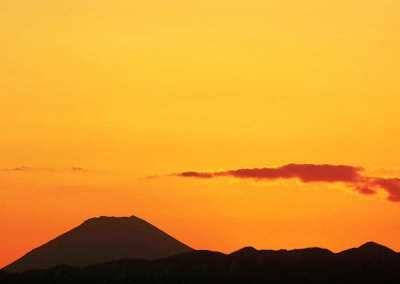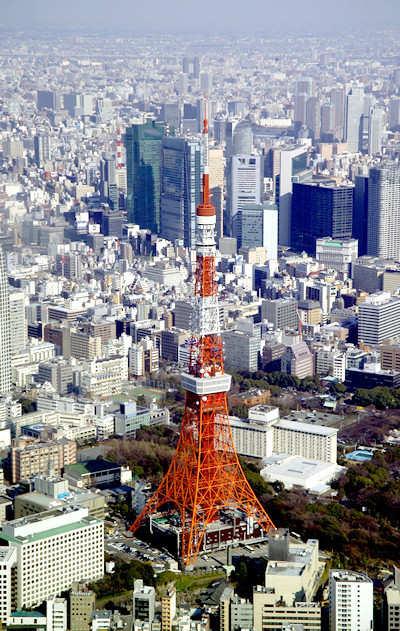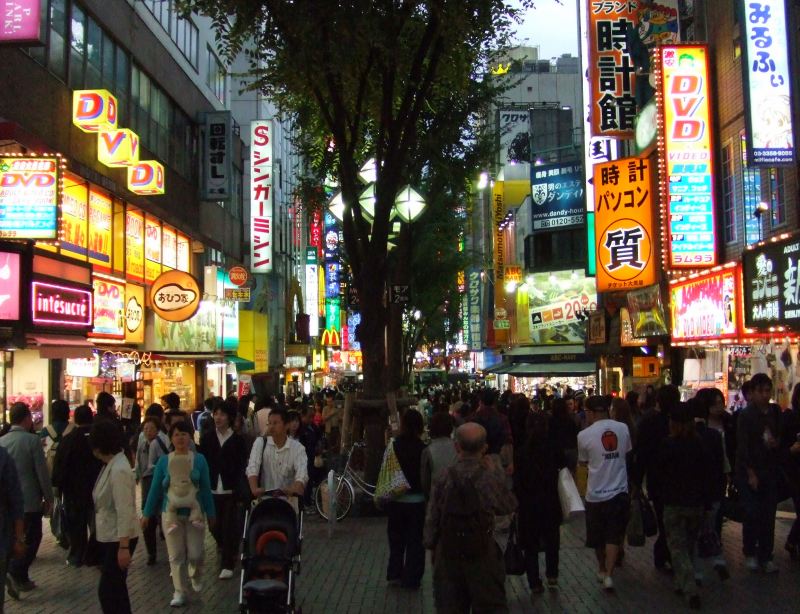Relations between China and Japan
China's relationship with Japan is one of the utmost importance and sensitivity. The high level of trade between the two countries belies an underlying and long standing tension.
Crude parallels can be drawn between the relationship of China and Japan and that between Britain (UK) and Europe. Both Japan and Britain are islands off a main continent. In both cases the last four hundred years have seen a powerful island nation emerge. Britain considers itself to have a unique national culture and yet Britain's cultural roots are in Europe, the same can be said for Japan with respect of China. At times Britain's island status has kept invaders from European invaders at bay, King Philip II of Spain, Napoleon and Hitler all tried and failed, similarly Japan has repulsed attempted conquests from China.
History of contact
China's contact with Japan goes back to Han dynasty times when Japan began to take on many Chinese traditions. For example there is an overlap in the written script - the Japanese 'Kanji' ➚ characters are derived from Chinese ('Hanzi') characters. The religions of Japan also have similarities, Buddhism is strong in both countries and Shintoism ➚ has some similar concepts to Daoism.

When Chinese regional power reached a highpoint in the Tang dynasty, Japan sent embassies to China and adopted the Chinese Confucian administrative system, although it never became a vassal state like Korea and Vietnam. A Buddhist scholar Jianzhen 鑒真 went to Japan in 754 with many scriptures. He founded the temple Tōshōdai-ji which still stands today. There have been occasions where China attempted to conquer Japan. After the Mongol dynasty overwhelmed the Song dynasty China, Kublai Khan launched an invasion of Japan in 1274. They were defeated by the violent storms at seas and also staunch Japanese defense. The event was repeated in 1281 when a typhoon drowned thousands of Mongol troops, the term ‘Kamikaze ➚’ (Divine Wind) comes from this incident. Plans for a third invasion in 1285 were abandoned due to the extreme projected cost. The plan has its echo in the attempted Spanish Armada ➚ invasion of Britain in 1588.

In the Ming dynasty 1550-1570 attacks from Japanese pirates along the south-eastern coast caused widespread destruction, with the cities of Hangzhou and Ningbo set to the torch. When Japan invaded Korea in 1593, China stepped in to defend Korea ➚ and repulse the Japanese attack.
Japanese Meiji Restoration
Probably the most important event in modern Japanese history came in 1868. The restoration was forced upon Japan by the western powers in a similar way to how the First Opium War forced onerous conditions on China in 1840. This time it was the Americans under Commodore Perry ➚ who caused unequal treaties between the US and Japan to be signed in 1858. For centuries Japan had been ruled by a dynastic emperor modeled somewhat on the China's imperial system. The Meiji Restoration brought in constitutional monarchy rather like Britain. The emperor was the figurehead of the country but had limited political power. The Imperial system in Japan has deeper roots than in China. Indeed the same family has ruled for 1,700 years as a single continuous dynasty. The emperor is considered sacred but he rarely rules by diktat, he works through the military shoguns and imperial officials. The Meiji system allowed Japan to rapidly modernize and so provided a blueprint as to how an Asian country could catch up and then take on the European powers as an equal.
Late Qing conflict with China
Japan's interest in the agricultural potential and natural resources of nearby Korea was not forgotten. When Qing power began to fade, Japan seized the opportunity to invade Korea in 1875. Japan then took the Ryukyu islands ➚ (Liuqiu 流求) in 1880 (a string of islands between Japan and Taiwan). The stand-off in Korea lasted until 1894 when Japan triggered the Sino-Japanese War ➚. On 25th July 1894 Japanese attacks on Chinese ships led to the sinking of China's few, brand-new European style warships. This battle for Korea had to be won on the seas because this was the main transport link to Korea - the mountains of north Korea obstruct access by land. Japan then launched attacks towards Beijing from both Korea and Shandong. After the defeat of China an ignominious peace treaty was signed by Li Hongzhang in 1895 on behalf of Dowager Empress Cixi. Although Korea became an independent nation again, China lost Taiwan and the Liaoning peninsula to Japan. At this time Japan had become Britain's Asian ally, as Britain wanted to limit the continuing Russian encroachment of eastern Asia. Japan can thus be seen as following Britain's foreign policy aims at this time. As a further sign of weakness, China required Russian support to eject Japan from Liaoning, only to strengthen Russia's hand in Manchuria from then on. The defeat of a once mighty China by the former peripheral state of Japan was more humiliating than defeat by European powers. The Japanese had been derogatively termed no more than ‘dwarf pirates’ 倭海盗 wō hǎi dào. However Japan's rapid rise demonstrated how an ancient Asian state could rapidly modernize. Japan soon moved to add Korea to its empire in 1910. Taiwan then prospered and rapidly modernized under Japanese rule with little unrest, this encouraged Japan to believe that further annexations within China would have the same result.
A further increase in tension with Japan arose at the first World War when Japan took over German concessions in Shandong in 1914. Up to this time Japan had served as a haven for Chinese seeking to modernize China and overthrow the Qing. Sun Yatsen formed the 同盟会 Tóng méng huì Chinese Alliance in Japan (1905) and with Japanese support set up a base in Guangzhou. Japan then issued its infamous 21 Demands on China ➚ in 1915. These included such things as Japanese occupation of Fujian province as well as control of key communication links all over China. The 1919 Versailles Peace Settlement ➚ favored Japan over China, in spite of China's support for the Allies against Germany. This led to the formation of the influential May Fourth Reform Movement in China (see full article here). The last Qing Emperor Puyi then took refuge in the Japanese legation in 1924.

Manchurian Rule
In 1931 Japan expanded from its Korean territories into Manchuria (Liaoning, Jilin, Heilongjiang). The coal, iron and agricultural resources were seen as a vital requirement for rapid Japanese industrialization. The increasing friction between the warlords ruling China as fiefdoms under the barely functioning Republic of China provided an ample opportunity for expansionist Japan. Evidence of further Chinese weakness came when the League of Nations commission ➚ forced Chiang Kaishek to sign a peace treaty with Japan effectively conceding that the occupation of Manchuria was lawful.
Chinese Resistance
The two Chinese protagonist organizations formed ‘united fronts’ to combat Japanese conquest for brief periods. To support the conquest of Manchuria the Japanese installed the last Qing Emperor (Puyi) as ruler of Manchuguo (he was after all the leader of the Manchu people). Japan succeeding in receiving international support for the new ‘nation state’ of Manchuria and industrial investment poured in from Europe. Russia took an increasingly strong interest in China and particularly Manchuria after their Communist revolution in 1917.
It was the communists who declared war on Japan in 1934 and it was they who wanted the Nationalists to join them in a 'United Front' against Japan. The extraordinary Xi'an kidnapping ➚ in 1936 forced Chiang Kaishek to agree to the first United Front. Chiang's chief concern, however, remained with removing his communist partners (who he considered terrorists) rather than fighting the Japanese.

Japanese Occupation
On the 7th July 1937 the Japanese-Chinese skirmish at the Marco Polo bridge just outside Beijing heralded the main Sino-Japanese War, and to many, the Second World War as a whole. Attacks began on Beijing and all the major sea ports and they soon fell to the Japanese. The period from 1931-1945 combines the Japanese Occupation of much of populated China at the same time as civil war between the Communists and Nationalists. The Chinese under Chiang fell back from Shanghai to Nanjing and then to Hankou before finally retreating to war-time capital Chongqing. The massacre and rape ➚ of thousands of Nanjing civilians remains a major grievance between China and Japan and there is now an annual memorial day to commemorate it. Japan's continued refusal to admit to war crimes is a barrier to building trust between the countries - Japan's history books still miss out these horrendous events. The museum of Japanese Germ Warfare ➚ near Harbin gives a stark reminder of these dark days.
In 1940 Japan installed Wang Jingwei ➚ as the puppet ruler of occupied China based at Nanjing (The Nanjing Regime of China 1940-45). Britain and America gave full support for the Nationalists under Chiang Kaishek in the hope that they would engage their enemies the Japanese in battle. American bombers were initially based in China for raids on Japan and this led to further Japanese inland incursions in order to destroy the airfields.
Post War Relations
By 1945 Japan was in retreat, its control of Myanmar/Burma had been lost, and bombs from American planes were destroying factories in Japan. At the time of the dropping of the Hiroshima and Nagasaki atomic bombs, Russia was already poised to take Manchuria from Japan. During the Civil War and after the Communist victory in 1949, Communist China saw Japan as under American control and animosity continued between the two countries. Japan was portrayed as supporting the American army against China in the Korean conflict. Although Japan is often categorized as a western democracy the actual situation is more complex with many Confucian doctrines still very much in evidence. For example the Liberal Democratic Party ➚ (LDP) has virtually monopolized power since 1955 (only out of office 1993-94 and 2009-14).

It is only with the long view of history that the future of relations between the countries can be predicted. There continue to be flare-ups between the countries at a local level, it should be remembered that some people still have bitter memories of suffering under Japanese occupation. In April 2012 a long running dispute over the ownership of the Diaoyu Islands ➚ (named Senkaku by the Japanese) flared up, souring relations and leading to some military posturing. The United States maintains military bases in Japan (USFJ ➚) from where it carries out surveillance missions over North Korea and China.
A similar perspective can be put on the relationship of Britain and mainland Europe, there is continued debate about British relations with Europe after Brexit and still a British distrust of European motives. Now that China has outstripped Japan in economic power it is unclear whether China's military power will resist calls for the righting of long held grievances.